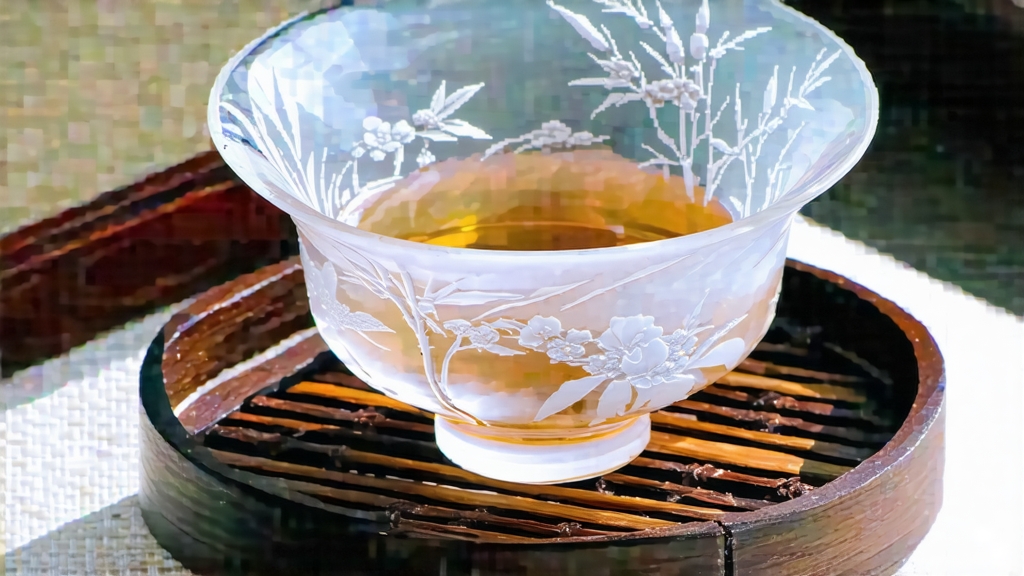
White Hair Silver Needle—Bai Hao Yin Zhen in Mandarin—is the most aristocratic expression of Chinese white tea. To the uninitiated it looks almost too delicate to be tea: a handful of slim, silvery spears that seem to have been borrowed from a heron’s breast. Yet each bud carries within it more than a thousand years of Fujianese lore, a minimalist craft that borders on meditation, and a flavor so subtle that it teaches patience to palates raised on coffee and cola. This essay invites the international reader to step inside the cool, pine-scented dawn of northern Fujian and discover why a tea so quiet can speak so loudly to the soul.
-
Historical whispers
The first written record of “white tea” appears in the Song Dynasty treatise Da Guan Cha Lun (1107 CE), where Emperor Huizong praises “white buds among the tribute cakes.” Those cakes were green tea bricks flecked with rare albino leaves; the modern, unpressed style was born during the late Qing in the villages around Taimu Mountain, Fuding County. According to village elders, a tea grower named Wei Zhen tried to save his crop from sudden rain by moving the freshly picked buds into a shaded side room. After three days of gentle air-drying the buds had lost 70 % of their weight but had gained a mellow, hay-sweet fragrance. The accidental micro-batch was presented to a passing Canton merchant who declared it “silver needle” because the fuzzy buds looked like acupuncture needles. By 1891 the tea was being shipped down the Min River to Fuzhou’s foreign hongs, and from there to London, Amsterdam and New York, where it fetched prices higher than Keemun or Da Hong Pao. Today Fuding and the neighboring Zhenghe County share a protected geographical indication; only buds picked from specific Da Bai and Da Hao cultivars between mid-March and early April may legally bear the name Bai Hao Yin Zhen. -
Terroir and cultivar
White Hair Silver Needle is impossible to separate from its native soil. The region’s red lateritic soil is rich in iron and quartz, draining quickly so that the tea roots are forced to dive deep. Morning fogs rolling off the East China Sea act like a natural shade cloth, slowing photosynthesis and thereby increasing the amino acid L-theanine, which gives the tea its signature brothy sweetness. The Da Bai (Big White) cultivar has buds that can reach 3.5 cm in length and swell to twice the width of those of run-of-the-mill tea bushes. Crucially, the epidermal cells of Da Bai produce an unusually thick layer of protective down that reflects ultraviolet light; this is the “white hair” that glints like moonlight and protects the bud from spring chill. Pickers wait until the bud is “fish-hook” shaped—still closed but plump enough to show a faint seam—an indicator that the internal saponins and polyphenols are in perfect balance. -
The craft of “non-craft”
White tea’s processing is famously minimal, yet the apparent simplicity hides ruthless precision. Picking begins at 5:30 a.m. while dew is still present; the moisture acts as a microscopic heat buffer during the first hours of withering. Baskets must be woven from thin bamboo slats too narrow to bruise the bud tip. By 9 a.m. the load is carried to the withering loft—a long, single-storey building whose walls are made of adjustable louvers. Here the buds are spread one layer deep on woven rattan trays that rest 80 cm above the ground, allowing air to circulate both above and below. For the next 36 to 48 hours the tea master does almost nothing, yet paradoxically must remain vigilant. Every two hours he sniffs a sample of buds warmed between his palms; if the grassy note edges toward cucumber skin, he raises the louvers to increase airflow. If the ambient humidity drops below 55 % he may mist the floor with cold water to prevent the surface from desiccating too fast, which would trap moisture inside and lead to sourness. No machine, thermometer or hygrometer is used; judgment is made by nose, fingertip and the sound the buds make when rubbed together—a faint squeak indicates the cell walls are still intact. When the moisture content reaches 8–10 % the buds are transferred to a charcoal-heated “pine room” for no more than